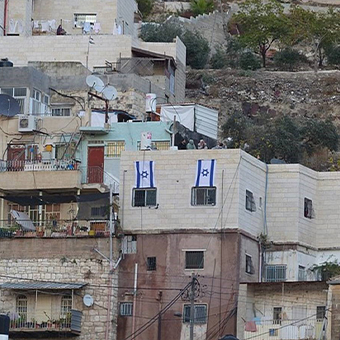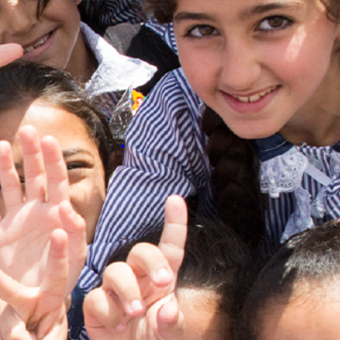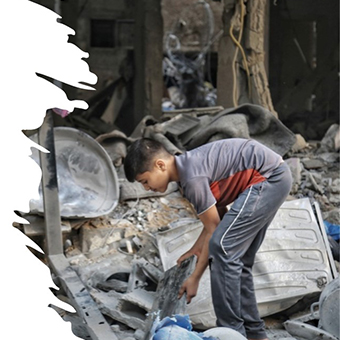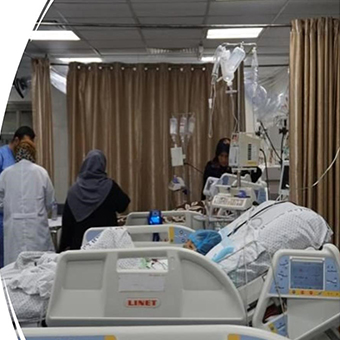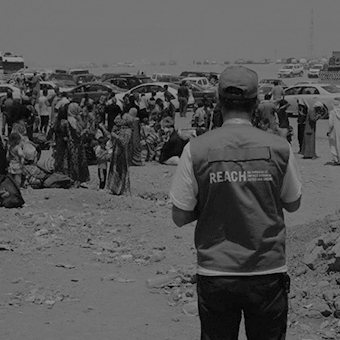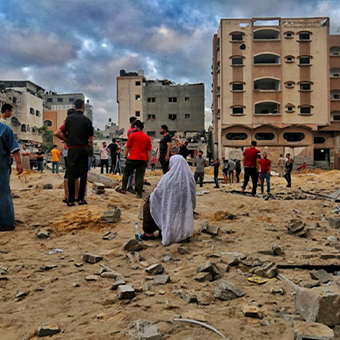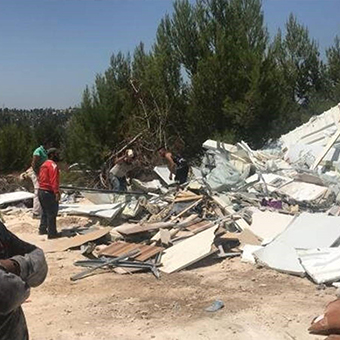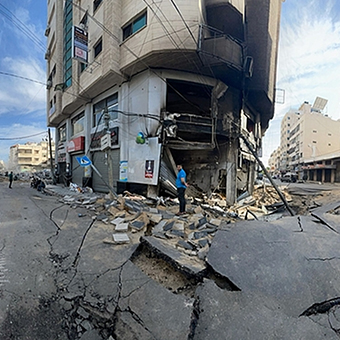2021 Multisectoral Needs Assessment
In July 2021, the Humanitarian Country Team (HCT), supported by the Palestinian Bureau of Statistics (PCBS), surveyed a sample of 7,500 nuclear families across the occupied Palestinian territory (OPT) to understand better their living standards, coping mechanisms, and physical and mental well-being. The findings were used by humanitarian and development organizations to better tailor their interventions across Gaza and the West Bank by looking at multiple sectors; food security, health, protection, shelter, and education – together.
Over the years, the humanitarian needs overview relied on humanizing cluster-specific needs assessments. Such an approach posed a gap concerning granular Multisectoral data that can establish linkages in sectoral needs and enable an inter-sectoral analysis that reveals underlying drivers of vulnerability. In 2020, The Humanitarian Country Team (HCT) and the donor community expressed the need for a Multisectoral Needs Analysis (MSNA) to support evidence-based planning and decision-making in OPT. The key findings of the MSNA ultimately will contribute to Grand Bargain Commitment 5 on Joint and Impartial needs Assessments, further linking the OPT response strategy with global policy priorities.
- Directly inform the 2022 Humanitarian Needs Overview (HNO) and Humanitarian Response Plan (HRP) in the OPT through the provision of a comprehensive, Multisectoral household-level dataset;
- Provide a detailed inter-sectoral analysis of the magnitude and severity of humanitarian needs among crisis-affected population groups in the OPT to support the calculation of sectoral and inter-sectoral People in Need (PiN) and severity figures in alignment with the JIAF methodology
- Identify vulnerable population groups and geographic areas with the most acute needs
- Inform development assistance planning and relevant SDG targets
For the first time, the humanitarian country team in OPT successfully conducted a Multisectoral Needs Assessment (MSNA) at the household level. The MSNA followed the Joint Intersectoral Analysis Framework (JIAF), a global methodology endorsed by the Global Cluster Coordinators and IASC.
In July 2021, PCBS successfully surveyed 7500 HHs required to generate representative data at the 48 strata (33 localities in Gaza and 15 areas in the West Bank). Female respondents represented 53 percent, which guarantees that the generated data is gender-sensitive. The MSNA survey developed over 350 needs indicators across all clusters, including AAP and gender indicators. The indicators are meant to measure the people's humanitarian conditions across three sub pillars: living standards, coping mechanisms, and physical and mental wellbeing.
In coordination with Cluster Coordinators and consultation with the cluster leads, the MSNA geographic scope disaggregated to 48 areas/strata with a statistically representative needs analysis.
West Bank: Stratification by Oslo Area and Governorate
- 11 governorates within Area C
- Area A&B as one single strata
- H2 as separate strata
- East Jerusalem as separate strata
- Additional strata for refugee camps
Gaza Strip: Stratification by locality
- 28 localities
- Five refugee camps
The following groups have been identified as most vulnerable and integrated into the MSNA data collection and need analysis: people living below the poverty level; Palestine refugees living in refugee camps; Palestine refugees living in outside refugee camps; People with shelter damage due to the last escalation; female-headed households; small-scale farmers; People with disabilities; Internally displaced people
